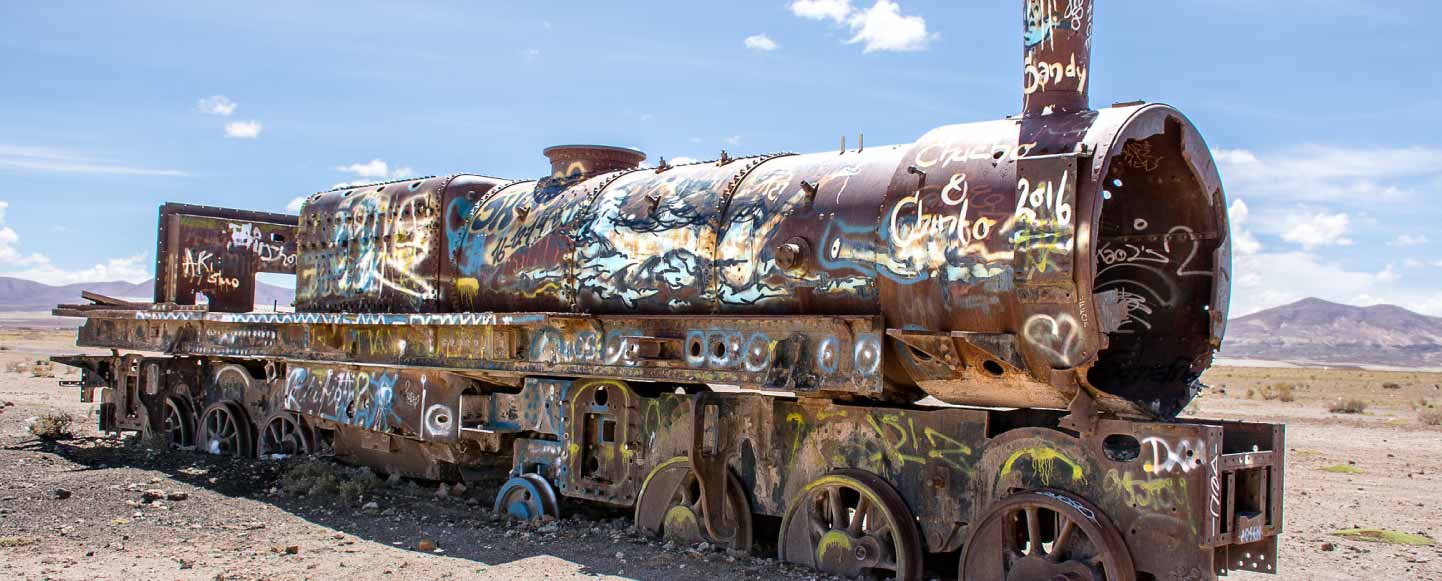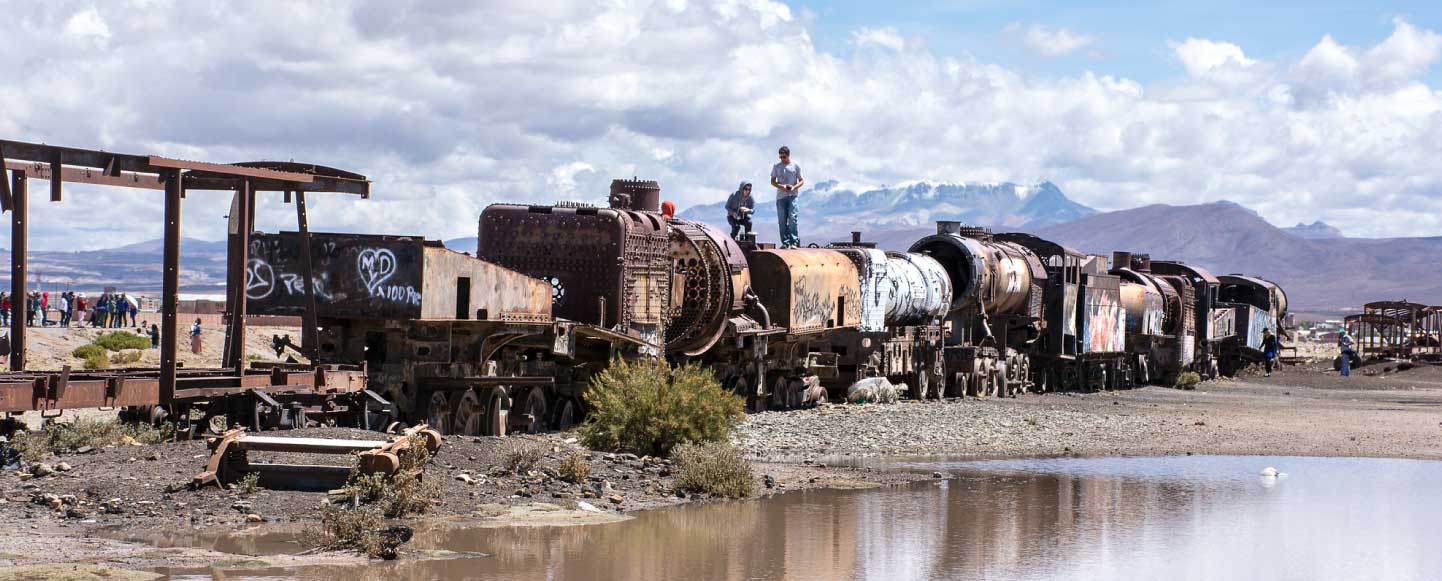
On the barren outskirts of the small town of Uyuni lies the one-of-a-kind Train Graveyard, or “Cementerio de Trenes”. This unique site is the perfect starting point for one of the most unforgettable journeys you’ll ever take. Scattered across the desert are rusting train carriages, remnants of Bolivia’s railway boom. With its dramatic setting, the Train Graveyard is a photographer’s dream and a must-see stop before heading into the otherworldly landscapes of the Uyuni Salt Flats.
How did it become a train graveyard?
Uyuni became a key transportation hub for South American trains in the late 19th century. However, the mining industry’s collapse in the 1940s halted these developments. Trains imported from Britain were abandoned outside Uyuni. Rather than decommissioning the trains and selling them as scrap, the demoralized people of Uyuni left the trains to rot.
Over the decades, the harsh environment took its toll. Salt-laden winds from the nearby Salar de Uyuni corroded the metal, leaving behind rusty, skeletal remains. Without fences or guards, scavengers stripped some trains for metal. All these things combined and left us with the mass train cemetery we see today.

How to get to there
The best way to get there is with one of the many salt flat tours as it’s a stop on all tours starting or ending in Uyuni. For those departing from Uyuni, the visit happens on the first morning, with about an hour spent exploring the graveyard and nearby Colchani. On the other hand, tours beginning in San Pedro de Atacama stop here on the final day, also dedicating around an hour to the site. Local guides share fascinating stories and historical details, making the experience even more engaging.
Getting the perfect picture
Early hours are best for lighting, as the soft morning glow highlights the textures and colors of the rusted metal. Wide-angle shots work well to capture the full scale of the site, while close-ups of weathered details add dramatic flair. Don’t forget to experiment with angles—climbing onto the trains gives a unique perspective (be careful, you can climb but at your own risk). Lastly, mix in the surrounding desert in your shots to emphasize the unique combination of scenery at the Train Graveyard.

Summary
When visiting Bolivia, the Train Graveyard in Uyuni is a must-see destination. This attraction offers a fascinating glimpse into the country’s history and provides an incredible backdrop for photos. It’s sure to be a memorable highlight of your trip. Check out detailed information about Salar de Uyuni tours to start planning your trip today!